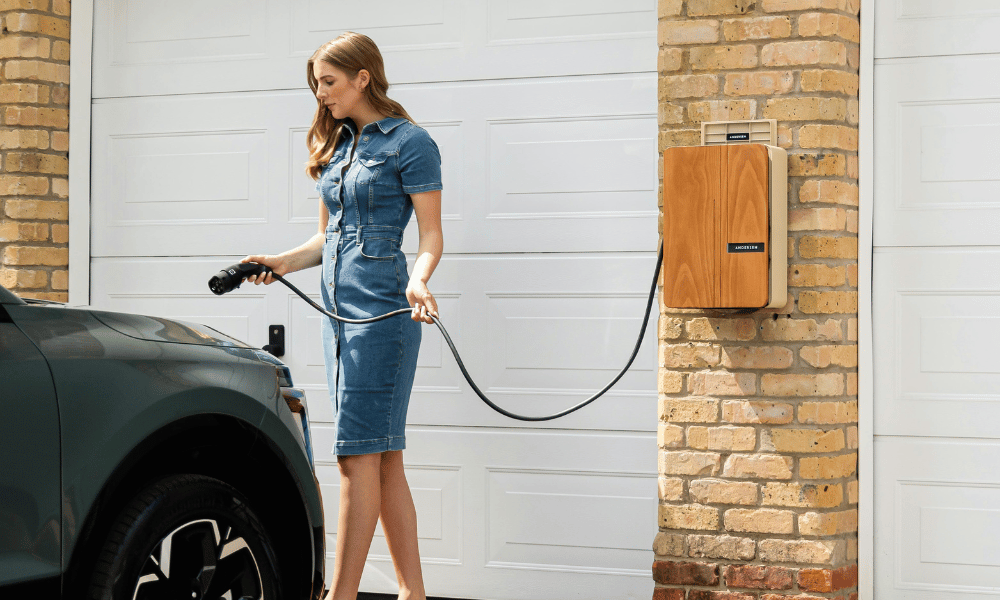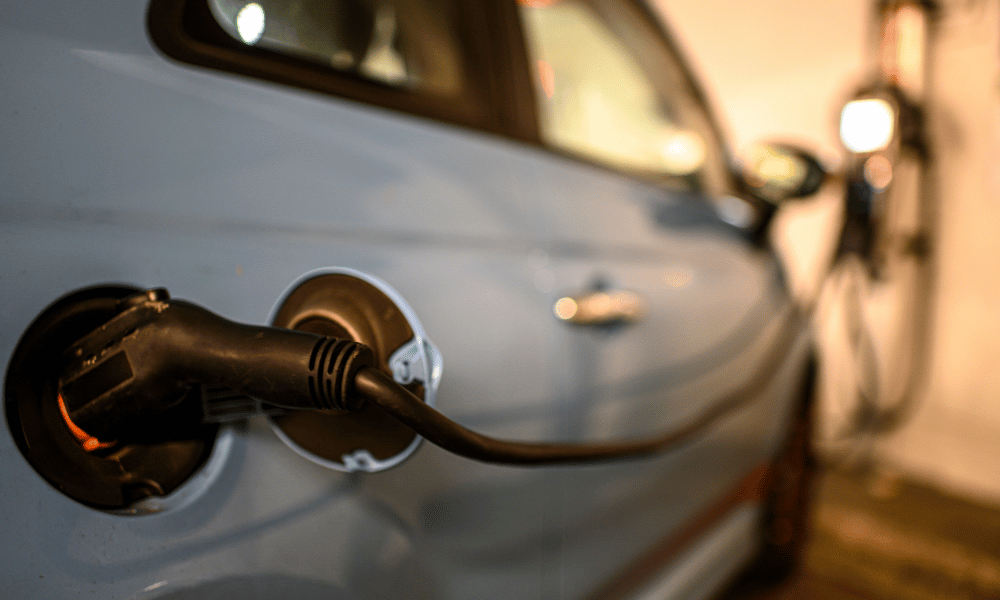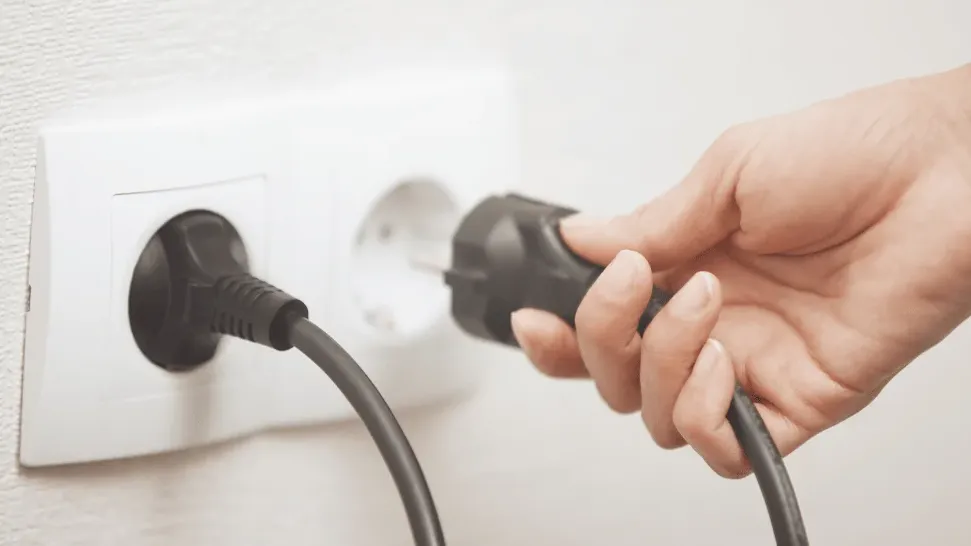Just imagine that you have just parked your shiny new electric car in the driveway. You look quite proud, even rather futuristic. Then a thought hits you: “Wait… Can I plug my car into a regular outlet?” You glance at the wall socket next to your garage and wonder if that’s all it takes. No fancy setup, no special tools — just your everyday plug.
Well, here is the good news: yes, you can plug your car into a regular outlet. But the not so good part is that it is not so fast. But you do not need to worry — we will walk through it all together. How it works, what you will need, and what to expect when you start charging your car right from home.
Can I plug my car into a regular outlet?
Yes, you can — But it is slow.You can charge your electric car using your normal wall outlet at home (the same type of outlet you would use to charge your phone charger, toaster or lamp). Most of the traditional outlets are 120 volts and that is much okay to charge. The catch? It’s slow.
As an example: Assuming you plug your car into an ordinary circuit, you can get 3 to 5 miles per hour of range. So, when you charge it overnight (i.e. 10 hours), you will find you have just a bit more than 30 to 50 miles of range in the morning. In this case, you drive short distances daily (to work, school, etc.), or address various errands, this may perfectly suit you.
However, when you are doing long drives or road trips, you will be likely to want something faster.
What You Need to Plug Into a Regular Outlet
Before you just grab your extension cord and plug in, there are a few things to know.after knowing the answer of the question: ’Can I plug my car into a regular outlet?’.
- A Level 1 charger, available on your car.
- A grounded outlet (an outlet that is safe and stable).
- A special line, where possible. You do not want to plug other appliances in the same outlet as to make the line overloaded.
With most electric cars, a charging cable is included as a simple plug-and-play device. You just need to plug it in your wall and car.
Is It Safe to Plug Into a Regular Outlet?
Yes, it’s safe — as long as your outlet and wiring are in good shape. And you must be a bit careful, particularly when you are living in an older house. Not all older outlets are designed to carry that amount of power over long periods of time. Leaving your car unattended overnight or during 10 or more hours can overheat the wires in case they were weak or damaged.
To be on the safe side, you should ensure your outlet is not burnt or cracked. Cheap extension cords or long extension cords should be avoided, as they become so easy to overheat. And when you are not certain of your wiring, it is a good idea to get once wondering when an electrician checks it. When everything is okay, then you are all right. You can plug in so safely and charge your car.

How Long Does It Take?
This is the part most people want to know. When you plug your car into a regular outlet, you’ll be using Level 1 charging — the slowest kind.
Here’s a rough idea: Depending on the size of your battery, it can be charged in 20 or 40 hours. When you are only doing a few trips a day, you simply plug it in each night and never truly run out anyway.
Just imagine that you charge your phone. You do not wait until it reaches 0% before you plug it in, you plug it in when you get home and the following day, it is ready.
When Using a Regular Outlet Actually Works Best
Frankly speaking, to most individuals, this is as far as it is necessary to go. It is easy to use, simple, and cheap to handle. It works best if you drive short distances — like under 40 miles a day — and can leave your car charging overnight. All you do is to plug it in before bed and wake up with a ready to go car. This is an ideal setup in case you do not mind lower charging rates and you do not need to buy a fancy home charger and spend money on it. It could not be more convenient when it comes to everyday living and the daily commuting.
When It’s Time to Upgrade
Now, in case, you drive much or you are tired of waiting, then you could upgrade to Level 2 charging. That is just a 240 volt outlet, such as your electric dryer or oven.
With Level 2, you’ll get:Approximately 20 to 30 miles per hour of range rather than 3 to 5. Even larger batteries could be charged in one night.
However, such an arrangement typically requires a specialist to install it. It is once in a lifetime, and you are on forever. Thus, when you can simply plug your car into any standard outlet, Level 2 saves you a lot of hassle in case you commute with a car more regularly.
Cost of Charging From a Regular Outlet
Let’s talk about the money side of things. When you charge your car on a normal socket, you are simply paying for the electricity that you are consuming – like turning on your lights or charging your phone. It is about average of $0.10 to 0.15 per kilowatt-hour, depending on the location. That is normally around 4- 6 dollars to full charge which remains a lot cheaper than filling a gas tank. And when you do not cover long distances in a day, you may not need to spend more than some dollars a week on the charge. Pretty good deal, right?
Tips for Charging Safely and Efficiently
Here are some easy tips to make sure everything goes smoothly when you plug your car into a regular outlet:
Use the right outlet.
Try to use one that’s on its own circuit. Avoid plugging other big things (like a space heater) into the same one.
Keep cords tidy.
No tangled mess. Keep your charging cable off the ground if you can — especially if it’s wet or dusty.
Charge overnight.
Electricity is often cheaper at night. Plus, you’re not using your car then anyway.
Watch for heat.
If you notice your outlet feels hot to the touch, stop and call an electrician.
Avoid long extensions.
They drop voltage and can overheat. Plug directly into the wall if possible.

The Pros of Plugging Into a Regular Outlet
Let’s look at the bright side first. Plugging your car into a regular outlet has a bunch of simple benefits. It’s super easy — you just plug it in and you’re good to go. There’s no setup, no extra cost, and no need to call an electrician. If you don’t drive a lot every day, this method works perfectly. It is quiet, clean, and convenient. And, you do not need any chargers or special cables. You can just use what’s already there at home and let your car charge while you relax.
The Downsides (Because There Are a Few)
Okay, now let’s talk about the not-so-fun parts. There are a few drawbacks of just plugging your car into a regular outlet. It is slow–very slow in case you have to drive a long way daily. It also may cause a certain burden on the older wiring, particularly when your house is not inspected recently. And long distance drivers may not be able to charge to full by the following day. But in truth, it is quite fine in the city driving or even daily commuting that covers not more than a few miles, and it does the job quite easily.
Can I Plug My Car Into a Regular Outlet in an Apartment or Somewhere Else?
That’s a good question — and kind of tricky.In case you reside in an apartment or a shared building, it is necessary to ask management. It is easy because there are already EV outlets or shared charging spots at some locations. Other people may not be willing to enable their electric plugging into normal sockets due to safety concerns. In case they lack one, request it, as more apartments are currently offering EV charging. And yes, you can technically plug into any place you have power but it is not always the most convenient option.
Common Mistakes When Plugging Into a Regular Outlet
Now you clearly have an answer to the question : ‘Can I plug my car into a regular outlet?’. Now you should be aware of some common mistake that people usually make when using a regular outlet. Some are using thin or worn extension cords, and this may become hot and dangerous. Those others use old or broken-outlets that are not designed to support hours of charging. It is also not safe to charge out in the rain without getting it covered and many of the people will expect their car to be fully charged after a few hours but with a regular outlet, it takes longer.
You avoid these small errors, and you’ll be alright. Keep it plugged, wait and leave the rest to your car.
FAQs
Q1. Can I plug my car into a regular outlet at home?
Yes, you can. The majority of electric vehicles can recharge without any harm using a typical 120-volt plug, however, it is slower and suited to small daily commutes or recharging at night.
Q2. What is the charge time of a normal outlet?
The amount of time it takes to charge a full battery will be 20 to 40 hours depending on the size of your car. You will normally have a 3-5 miles per hour range.
Q3. Can it be charged using a normal wall socket?
Yes, but when your outlet, and wiring are good, it is safe. Do not use old and damaged outlets and never use thin extension cords – they may become overheated.
Q4. Do I require a special plug on an ordinary outlet?
No special setup needed. Most electric cars already have a level 1 charging system which can be connected to a regular outlet for easy but slow overnight charging.
Final Thoughts — So, Can I Plug My Car Into a Regular Outlet?
The answer is yes, you can indeed plug your car in a standard socket. It’s simple, safe, and cheap. You may not need much of it in case you do not drive a long distance daily. The only thing to do is plug it in at home and get to sleep at night.
However, in case you want fast charging or travel a long distance, you can invest in level 2 charging and it will be worth the money. Still, there is no rush. Start with what you have got. Get to know your car, how far you need to travel on a day to day basis and then later on decide whether you want something more powerful.
You will not require expensive equipment to have fun in your electric car. The local power source is just fine sometimes. Ok, then, put your car in any socket. It works. It’s easy. And it gets the job done.

